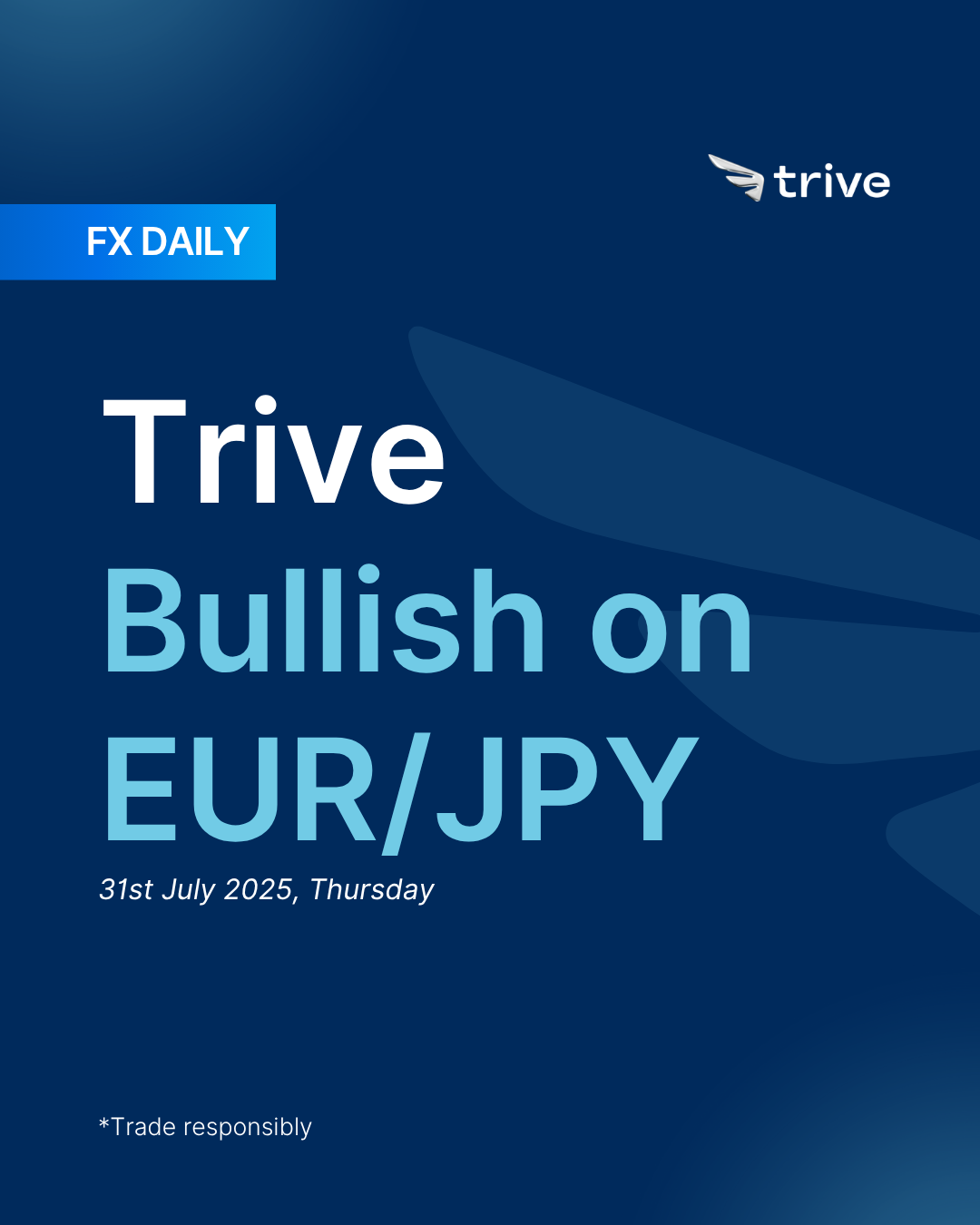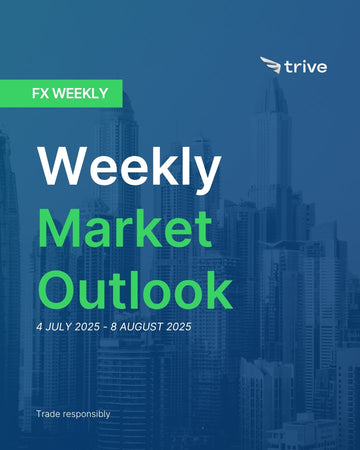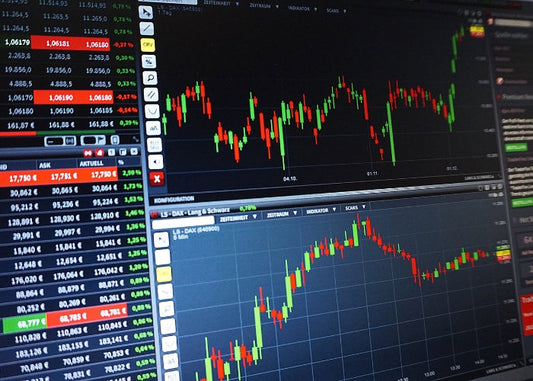FX Daily: Trive Bullish on EUR/JPY

EUR/JPY remains bullish as Euro strength is supported by the ECB’s hawkish stance and reduced rate cut expectations, while the Yen stays weak due to soft inflation, cautious BoJ signals, and political uncertainty. Solid Eurozone data and trade optimism further support the EUR, while Japan’s domestic outlook limits any Yen rebound. Bias remains to the upside.
JPY: Political pains
The Japanese Yen went through a highly volatile week, driven by a shift from domestic political uncertainty to the announcement of a major trade deal with the United States. The currency started the week as the top performer among G10 currencies, with USD/JPY falling below 147.00 after the ruling LDP-Komeito coalition lost its majority in the Upper House election. Markets initially took comfort in Prime Minister Ishiba’s commitment to stay in office, which helped ease fears of political instability.
However, the focus quickly shifted mid-week when the US and Japan announced a significant trade agreement. The deal imposed a 15% tariff on Japanese goods, avoiding the previously threatened 25%, and included Japan’s pledge to invest $550 billion in the US, purchase American LNG, and boost defense spending with US firms. This announcement sparked a strong rally in Japanese equities. The Yen’s response was more complicated. On one hand, removing a major trade risk led to speculation that the Bank of Japan might be in a better position to raise interest rates, which initially strengthened the Yen and brought USD/JPY down to around 145.80. On the other hand, this view was short-lived.
As the weekend approached, that optimism faded. Tokyo CPI data for July came in weaker than expected, with both the headline and core readings dropping below 3.0% for the first time since March. This gave markets a clear reason to doubt any imminent BoJ rate hike. Adding to that, a Bloomberg report cited BoJ sources saying that while a rate hike is possible this year, more data would likely be needed by the end of 2025 to make such a decision. This softer tone reversed the earlier Yen strength and pushed USD/JPY back toward 148.00.
Early in the week, Bank of Japan sources said the election results wouldn’t significantly influence policy. Following the trade deal, BoJ Deputy Governor Uchida noted that its effects were largely in line with the bank’s earlier assumptions, which also helped to calm some of the market’s initial enthusiasm for policy tightening.
Political instability also played a role throughout the week. Though Prime Minister Ishiba’s promise to stay on initially reassured markets, rumors of his potential resignation emerged mid-week. He publicly denied them, but the uncertainty added to the Yen’s volatility. Overall, the Yen was pulled in multiple directions—initial strength from political clarity and trade optimism gave way to weakness driven by softer inflation data and a more cautious message from the BoJ.
We maintain a bearish outlook on the Japanese Yen in the near term. The combination of weaker Tokyo CPI, cautious BoJ commentary, and lingering policy divergence with the Fed keeps USD/JPY supported. While the recent trade deal with the US may have reduced external risks, it hasn’t meaningfully changed Japan’s domestic inflation or rate outlook. Markets have quickly unwound any earlier optimism for near term tightening, and with the BoJ signaling it needs more data into 2025, it’s hard to see a catalyst for sustained Yen strength right now.
However, risks are not one sided. Thursday’s BoJ meeting will be important, if policymakers strike a more hawkish tone or hint at earlier action, we could see a sharp short covering rally in the Yen. Political risks around the election outcome also remain in play, and a stronger than expected showing by the ruling coalition could support the currency. For now, though, we believe the balance of risks still leans toward further Yen weakness.
EUR: Buy in dips
The Euro showed notable strength and ended the week higher against the dollar, supported by a surprisingly hawkish tone from the European Central Bank that helped offset ongoing trade-related uncertainty. The currency began the week cautiously, as markets focused on the upcoming August 1st US tariff deadline and reports that the EU was preparing a multi-billion euro retaliation plan. Sentiment shifted mid-week after reports suggested a US-EU trade deal with a 15% tariff rate might be close, pushing EUR/USD to a weekly high near 1.1780. However, the main turning point came on Thursday during the ECB meeting. Although the bank held rates steady, President Lagarde’s firm “wait and watch” stance, combined with reports that policymakers see a high bar for a September cut, led to a hawkish shift in market expectations. This strength allowed the Euro to push through mixed economic data and conflicting trade headlines, ending the week on strong footing above 1.1700.
The ECB kept its deposit rate at 2.00%, as expected, but President Lagarde’s press conference was the main focus. She said policy is “in a good place” and noted that the ECB’s June projections remained valid despite trade risks. Her comments pushed back against the idea of near-term rate cuts, and the decision to hold rates was unanimous. Afterward, source reports confirmed that ECB policymakers see a high bar for easing in September. This led to a sharp repricing in the money markets, with expectations for rate cuts by the end of the year dropping from over 20 basis points to around 14 basis points by Friday.
Lagarde’s message was echoed on Friday by ECB officials including Villeroy, Kazaks, and Nagel, who all stressed the need for a steady hand and no urgency to change policy. This coordinated tone helped anchor the Euro and gave investors confidence in the ECB’s current path.
On the trade front, the Euro remained sensitive to the back-and-forth in EU-US negotiations. The week began with the EU preparing a potential €93 billion retaliation package in case of a breakdown in talks. Optimism surged mid-week following the US-Japan trade agreement, with reports suggesting that the EU and US were nearing a similar deal. However, that optimism faded after a White House official dismissed those reports as speculation. President Trump later said there was only a “50-50 chance” of a deal with the EU, which limited the Euro’s further gains.
Economic data was mixed but showed some resilience. The July HCOB Flash PMIs for the Eurozone surprised to the upside, with the Composite Index rising to 51.0 from 50.6, suggesting solid economic momentum at the start of the third quarter and continued disinflation, supporting the ECB’s patient stance. On Friday, Germany’s IFO Business Climate index for July came in slightly below expectations at 88.6 but edged up from the previous month. The data had little impact on the market. Earlier in the week, ECB surveys showed a drop in one-year inflation expectations among firms, down to 2.5% from 2.9%, and continued weakness in corporate loan demand, reflecting ongoing challenges in the region.
Overall, the Euro’s performance was primarily driven by the ECB’s hawkish tone, which allowed it to stay firm even in the face of trade uncertainties and a stronger US dollar late in the week. While trade headlines caused some volatility, the ECB’s message acted as a strong anchor for the currency and gave it a solid base to finish the week higher.
The Euro maintains a bullish outlook supported by the European Central Bank’s unexpectedly hawkish stance, with President Lagarde emphasizing a “wait-and-see” approach and suggesting the ECB is in a “good place” with inflation at target. Markets have sharply scaled back expectations for further rate cuts, and policymakers are signaling a high bar for easing in September, helping to anchor the EUR even amid external uncertainties.
The currency has also regained upward momentum on optimism over a potential EU-US trade deal, which, if finalized, would remove a key downside risk and potentially push the Euro toward fresh year to date highs. ECB officials have largely downplayed the need for further stimulus, reinforcing the perception that the easing cycle may be nearing its end. Recent upside surprises in Eurozone PMIs and resilient economic indicators further support the case for a steady policy path.
However, some caution is warranted as disinflation continues, and any breakdown in trade talks or weaker data could weigh on sentiment. Still, with the market now pricing in fewer than 20bps of rate cuts for the rest of the year and a coordinated ECB message backing EUR stability, the path of least resistance remains to the upside, especially if a trade deal materializes before the August 1st tariff deadline.
 EUR/JPY 4H
EUR/JPY 4H
Disclaimer
This material is provided for informational purposes only and does not constitute financial, investment, or other advice. The opinions expressed in this material are those of the author and do not necessarily reflect the views of Trive International. No opinion contained in this material constitutes a recommendation by Trive International or its author regarding any particular investment, transaction, or investment strategy. This material should not be relied upon in making any investment decision.
The information provided does not consider the individual investment objectives, financial situation, or needs of any specific investor. Investors should seek independent financial advice tailored to their individual circumstances before making any investment decisions. Trive International shall not be liable for any loss, damage, or injury arising directly or indirectly from the use of this information or from any action or decision taken as a result of using this material.
Trive International may or may not have a financial interest in the companies or securities mentioned. The value of investments may fluctuate, and investors may not get back the amount they originally invested. Past performance is not indicative of future results.
For more information about Trive International, please visit http://trive.com/int
Additional Information
Investing involves risk, including the potential loss of principal. Diversification and asset allocation strategies do not ensure a profit or guarantee against loss. The content in this material is subject to change without notice and may become outdated or inaccurate over time. Trive International does not undertake any obligation to update the information in this material.
By accessing this material, you acknowledge and agree to the terms of this disclaimer. If you do not agree with these terms, please refrain from using this information.
कोई टिप्पणी नहीं
Home
Trive
TriveHub





0 टिप्पणियाँ